CMU Energy Week tackles AI and energy
Over three days, investors, entrepreneurs, and researchers explored how AI and energy can complement each other.
Carnegie Mellon’s ninth Energy Week focused on AI, a theme that is evolving in real time. AI presents unique challenges and opportunities—a promising and powerful tool with endless sustainability applications that also consumes eye-watering amounts of energy to power its data centers.
This event, hosted by the Scott Institute for Energy Innovation, engaged with figures from academia, industry, and government—and hosted opportunities for entrepreneurs and student researchers—to take stock of where we are and theorize what’s next at the intersection of two crucial topics.
Day one
Energy Week 2025 officially kicked off with Investor Day, which explored the role of industry innovators and investors in merging AI and sustainability.
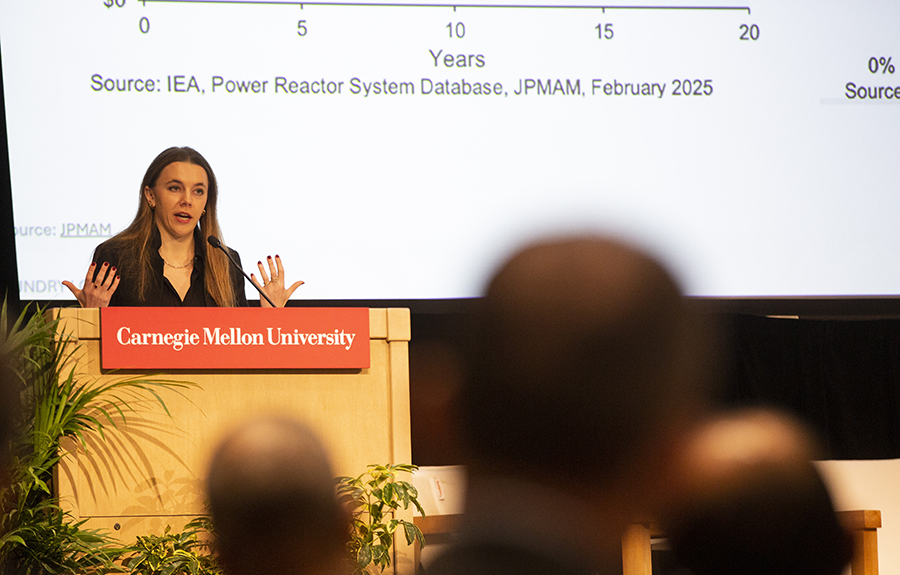
Lisa Hansmann delivers a keynote on Investor Day during Energy Week 2025.
The opening keynote was from Lisa Hansmann of Foundry Logic, who also participated in the Investor Forum Panel Discussion alongside professionals at Innovation Works, Helios Climate Ventures, and Operator Collective.
One of the highlights of the first day was a chance to glimpse the future of clean energy technologies at the Energy and Cleantech Startup Pitch Showcase. Thanks to participation from 20 startups, including Sabana, J.P. Robotics, and SeaLion Energy, the competition was a strong showing of CMU’s entrepreneurial side. Company founders got valuable face time with investors capable of meeting their funding needs to take their innovations—ranging from improving battery life to automating disassembly to AI-driven data management—to the next level, with greater potential for public impact.
Following the startup pitch showcase, the nonpartisan nonprofit organization Team Pennsylvania presented three energy scenarios for the state—which they colloquially referred to as Highways, Homesteads, and Fields—to explore the impact of different hypothetical scenarios on Pennsylvania’s energy investments, emissions, and the economy.
Day two
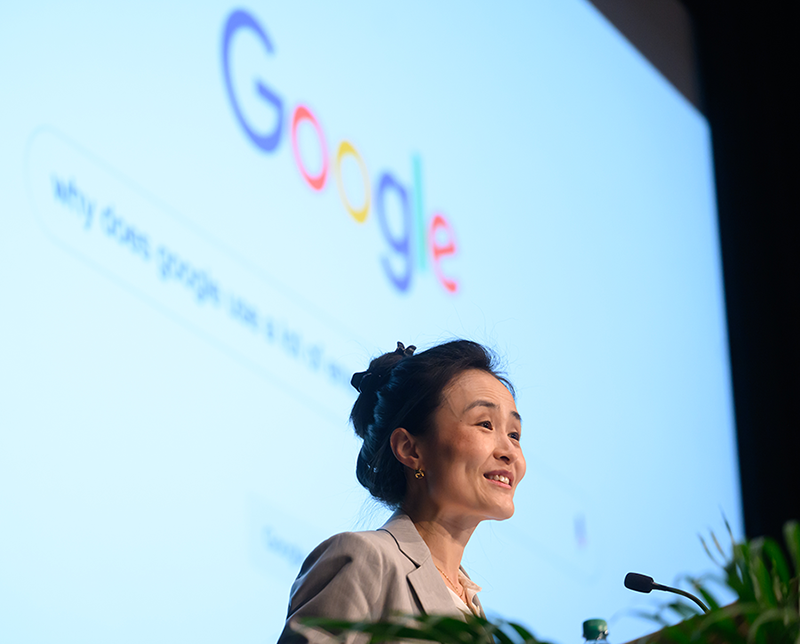
Google’s Lucia Tian during CMU Energy Week 2025.
AI & Energy was the focal point of Energy Week’s second day. A timely topic with local and global dimensions, many of the most pressing questions about AI’s energy demands, the future of the energy workforce, and the frontiers of AI in promoting energy and climate solutions were contemplated during a series of panel discussions.
- Panel: Managing AI energy demands and climate goals
- Panel: Frontiers of AI in energy and climate solutions
- Panel: AI and the energy workforce
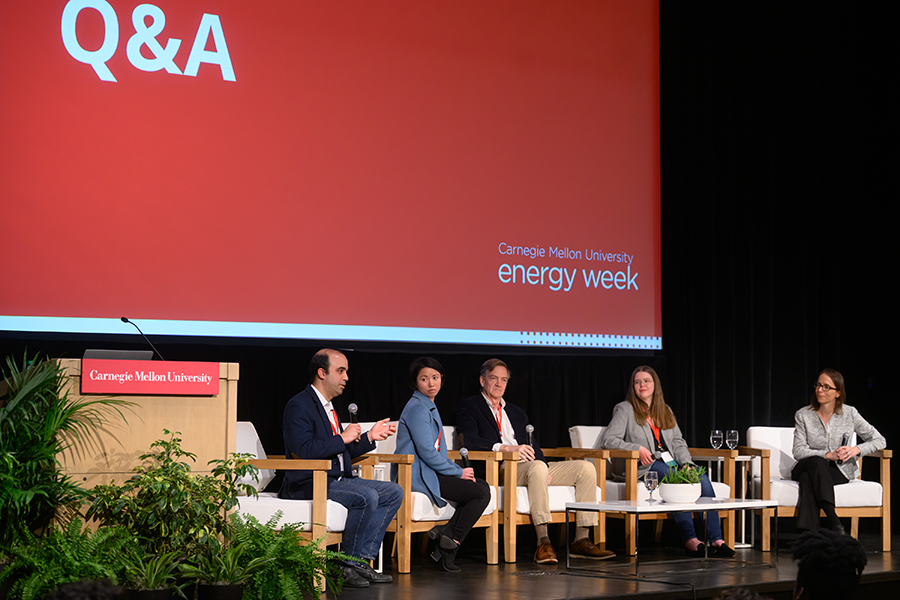
Day two started and concluded with keynotes from high-caliber professionals who offered a glimpse of the tech industry’s approach to leveraging AI for sustainable purposes. Google’s Lucia Tian, head of clean energy and decarbonization technologies at the search engine, started off the day’s agenda.
In the afternoon, Marianne Walck, director of the National Energy Technology Laboratory, gave a keynote presentation, as did Allegheny County Executive Sara Innamorato. The final keynote was from Vibhu Kaushik, global head of energy at Amazon Web Services, who joined the Scott Institute’s director, Costa Samaras, for a fireside chat to wrap up the day’s agenda.
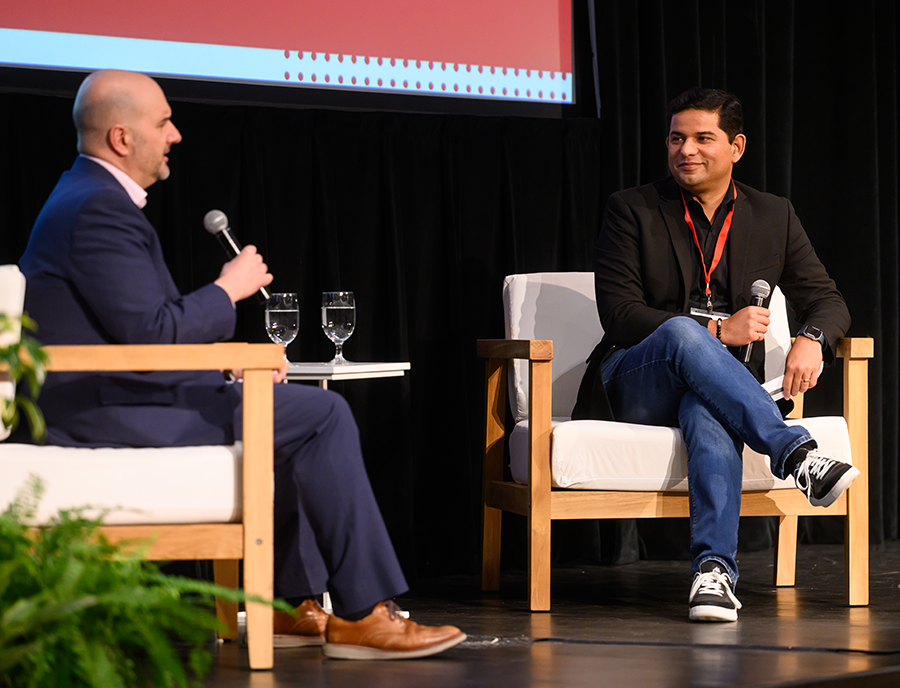
Vibhu Kaushik of Amazon Web Services joins Scott Institute Director Costa Samaras for a fireside chat during Energy Week 2025.
Day three
Students were center stage on the third and final day of Energy Week 2025, representing the minds and ideas who will form the future of the energy industry.
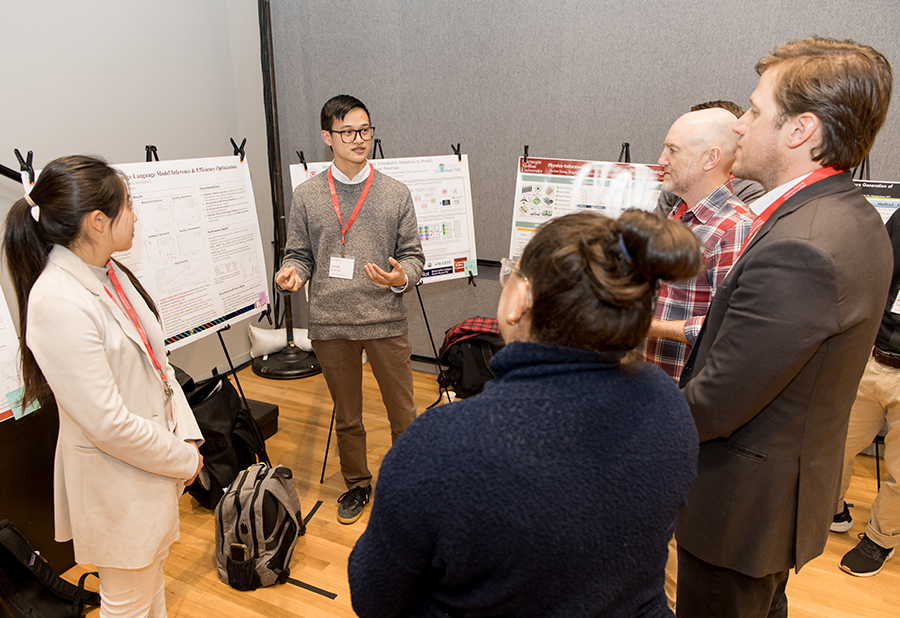
Presenters and judges talk during the poster competition.
Energy Week 2025 wrapped up with Student Day, spotlighting the thinkers who represent the future of the energy industry. Many student organizations were front and center, including at the Tepper Energy & Clean Tech Club Case Competition. Teams from CMU, Cornell, Rice University, and the University of Pittsburgh were among the many competitors from around the nation.
First place went to Arizona State University’s Solar Edge; second place went to Rice University’s Carbon Duty; and third place was awarded to the University of Pittsburgh’s Solis Power.
The Student Energy Research Poster Competition formed a gallery of innovation. First place went to Corinne Smith-Lewis, a Ph.D. candidate in mechanical engineering, for a presentation on applying an operando voltage sensor for a gas recombination catalyst. First runner up was Judy Park, a Ph.D. student in engineering and public policy, for the poster “Mortality and Distributional Effects of Air Pollution from Integrated Steelmaking in the United States.” Receiving third place was electrical and computer engineering Ph.D. student Aayushya Agarwal’s “ML-Physics Synergy for Robust Strategies Against Weather and Load Fluctuations.” Jessy Ha’s project on proton exchange membrane water electrolyzers earned a nod for most innovative research idea.
Energy Week concluded with the Careers in Energy Networking Reception, with participation from Duquesne Light Company, National Renewable Energy Laboratory, and Trane Technologies among others.
